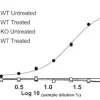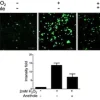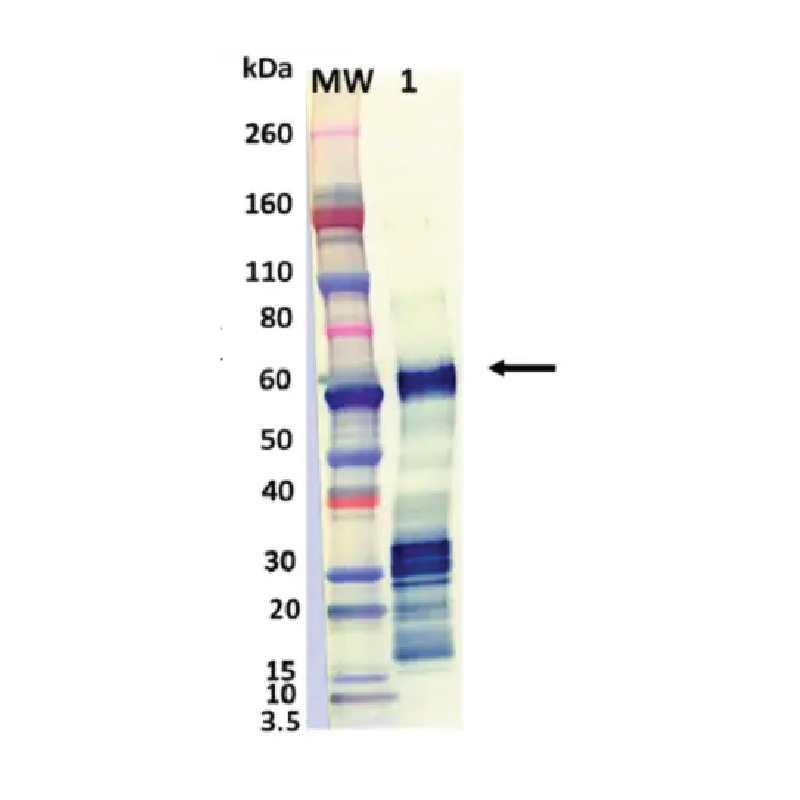- Empty cart.
- Continue Shopping

Mouse LBP ELISA Kit (LPS Binding Protein)
Mouse LBP ELISA Kit (LPS Binding Protein)
This product is currently out of stock and unavailable.
Key features and details
- One-wash 90 minute protocol
- Sensitivity: 8.34 pg/ml
- Range: 50 pg/ml – 3200 pg/ml
- Sample type: Cell culture media, Cit plasma, EDTA Plasma, Hep Plasma, Serum
- Detection method: Colorimetric
- Assay type: Sandwich (quantitative)
- Reacts with: Mouse
Overview
Product name
Detection method
Precision
| Sample | n | Mean | SD | CV% |
|---|---|---|---|---|
| Serum | 8 | 7.5% |
| Sample | n | Mean | SD | CV% |
|---|---|---|---|---|
| Serum | 3 | 10.1% |
Sample type
Assay type
Sensitivity
Range
Recovery
| Sample type | Average % | Range |
|---|---|---|
| Serum | 84 | 83% – 85% |
| Cell culture media | 99 | 92% – 103% |
| Hep Plasma | 100 | 95% – 104% |
| EDTA Plasma | 97 | 96% – 99% |
| Cit plasma | 103 | 101% – 105% |
Assay time
Assay duration
Species reactivity
Product overview
Mouse LBP ELISA Kit (LPS Binding Protein) (ab269542) is a single-wash 90 min sandwich ELISA designed for the quantitative measurement of LBP (LPS Binding Protein) protein in cell culture media, edta plasma, hep plasma, serum, and cit plasma. It uses our proprietary SimpleStep ELISA® technology. Quantitate Mouse LBP (LPS Binding Protein) with 8.34 pg/ml sensitivity.
SimpleStep ELISA® technology employs capture antibodies conjugated to an affinity tag that is recognized by the monoclonal antibody used to coat our SimpleStep ELISA® plates. This approach to sandwich ELISA allows the formation of the antibody-analyte sandwich complex in a single step, significantly reducing assay time. See the SimpleStep ELISA® protocol summary in the image section for further details. Our SimpleStep ELISA® technology provides several benefits:
– Single-wash protocol reduces assay time to 90 minutes or less
– High sensitivity, specificity and reproducibility from superior antibodies
– Fully validated in biological samples
– 96-wells plate breakable into 12 x 8 wells strips
A 384-well SimpleStep ELISA® microplate (ab203359) is available to use as an alternative to the 96-well microplate provided with SimpleStep ELISA® kits.
Notes
Lipopolysaccharide binding protein is a protein that in humans is encoded by the LBP gene. This gene is mapped to 20q11.23. LBP is a soluble acute-phase protein that binds to bacterial lipopolysaccharide (or LPS) to elicit immune responses by presenting the LPS to important cell surface pattern recognition receptors called CD14 and TLR4. It is present in the cerebrospinal fluid of patients with pneumococcal meningitis. The protein encoded by this gene is involved in the acute phase immunologic response to gram-negative bacterial infections. LBP is made in the liver during the acute phase of infections and is thought to function as a carrier for LPS and to help control LPS-dependent monocyte responses.
Platform
Properties
Storage instructions
| Components | 1 x 96 tests |
|---|---|
| 10X Mouse LBP (LPS Binding Protein) Capture Antibody | 1 x 600µl |
| 10X Mouse LBP (LPS Binding Protein) Detector Antibody | 1 x 600µl |
| 10X Wash Buffer PT (ab206977) | 1 x 20ml |
| Antibody Diluent CPR | 1 x 6ml |
| Mouse LBP (LPS Binding Protein) Lyophilized Recombinant Protein | 2 vials |
| Plate Seals | 1 unit |
| Sample Diluent NS (ab193972) | 1 x 50ml |
| SimpleStep Pre-Coated 96-Well Microplate (ab206978) | 1 unit |
| Stop Solution | 1 x 12ml |
| TMB Development Solution | 1 x 12ml |
Research areas
- Immunology
- Innate Immunity
- Macrophage / Inflamm.
- Microbiology
- Protein
- Human Protein
- Defensin
- Immunology
- Innate Immunity
- TLR Signaling























